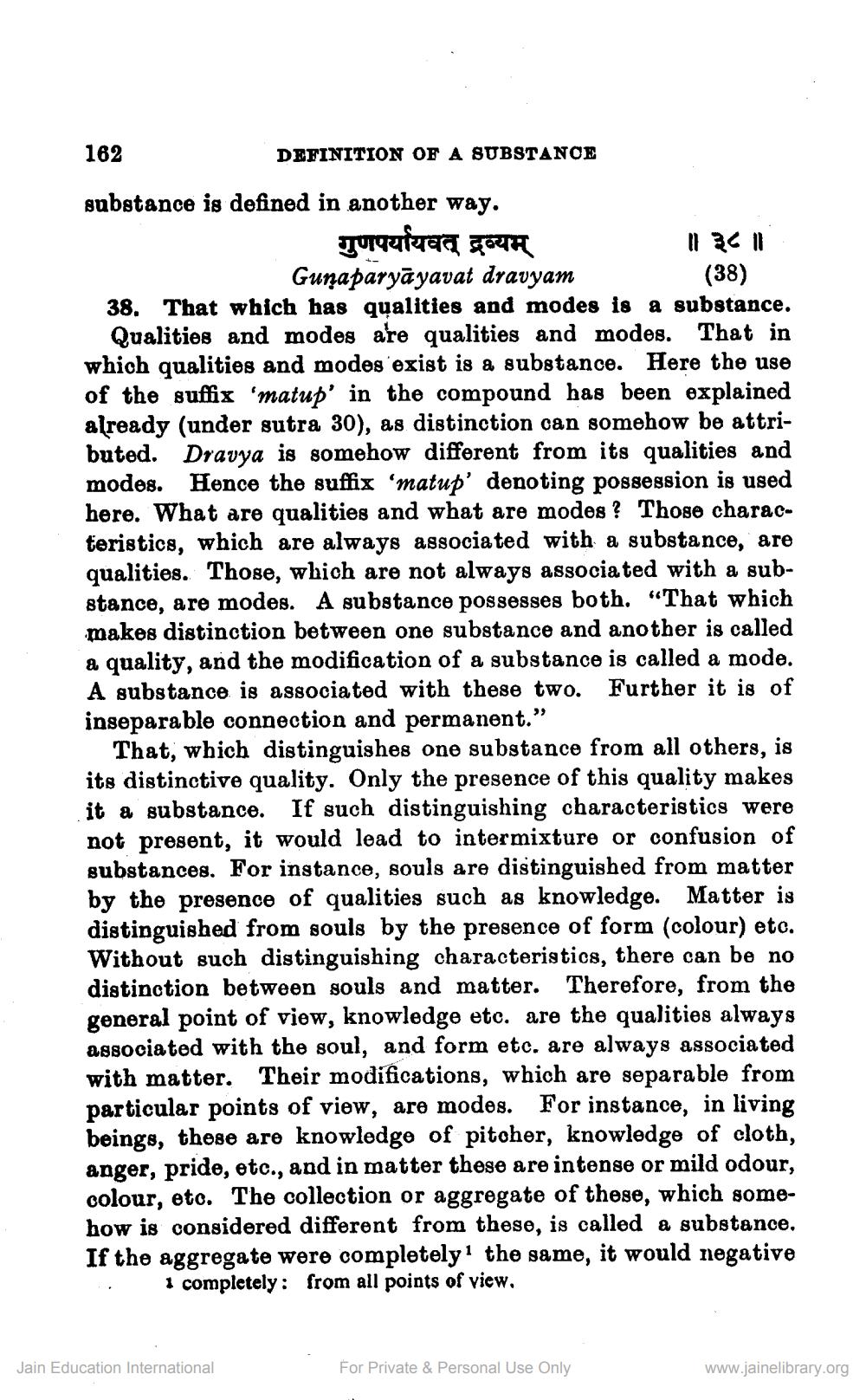________________
162
DEFINITION OF A SUBSTANCE
substance is defined in another way. गुणपर्यायवत् द्रव्यम्
ll 36 Gunaparyāyavat dravyam
(38) 38. That which has qualities and modes is a substance.
Qualities and modes are qualities and modes. That in which qualities and modes 'exist is a substance. Here the use of the suffix 'matup' in the compound has been explained already (under sutra 30), as distinction can somehow be attributed. Dravya is somehow different from its qualities and modes. Hence the suffix 'matup' denoting possession is used here. What are qualities and what are modes? Those characteristics, which are always associated with a substance, are qualities. Those, which are not always associated with a substance, are modes. A substance possesses both. “That which makes distinction between one substance and another is called a quality, and the modification of a substance is called a mode. A substance is associated with these two. Further it is of inseparable connection and permanent."
That, which distinguishes one substance from all others, is its distinctive quality. Only the presence of this quality makes it a substance. If such distinguishing characteristics were not present, it would lead to intermixture or confusion of substances. For instance, souls are distinguished from matter by the presence of qualities such as knowledge. Matter is distinguished from souls by the presence of form (colour) etc. Without such distinguishing characteristics, there can be no distinction between souls and matter. Therefore, from the general point of view, knowledge etc. are the qualities always associated with the soul, and form etc. are always associated with matter. Their modifications, which are separable from particular points of view, are modes. For instance, in living beings, these are knowledge of pitcher, knowledge of cloth, anger, pride, etc., and in matter these are intense or mild odour, colour, etc. The collection or aggregate of these, which somehow is considered different from these, is called a substance. If the aggregate were completely the same, it would negative . i completely: from all points of view.
Jain Education International
For Private & Personal Use Only
www.jainelibrary.org




